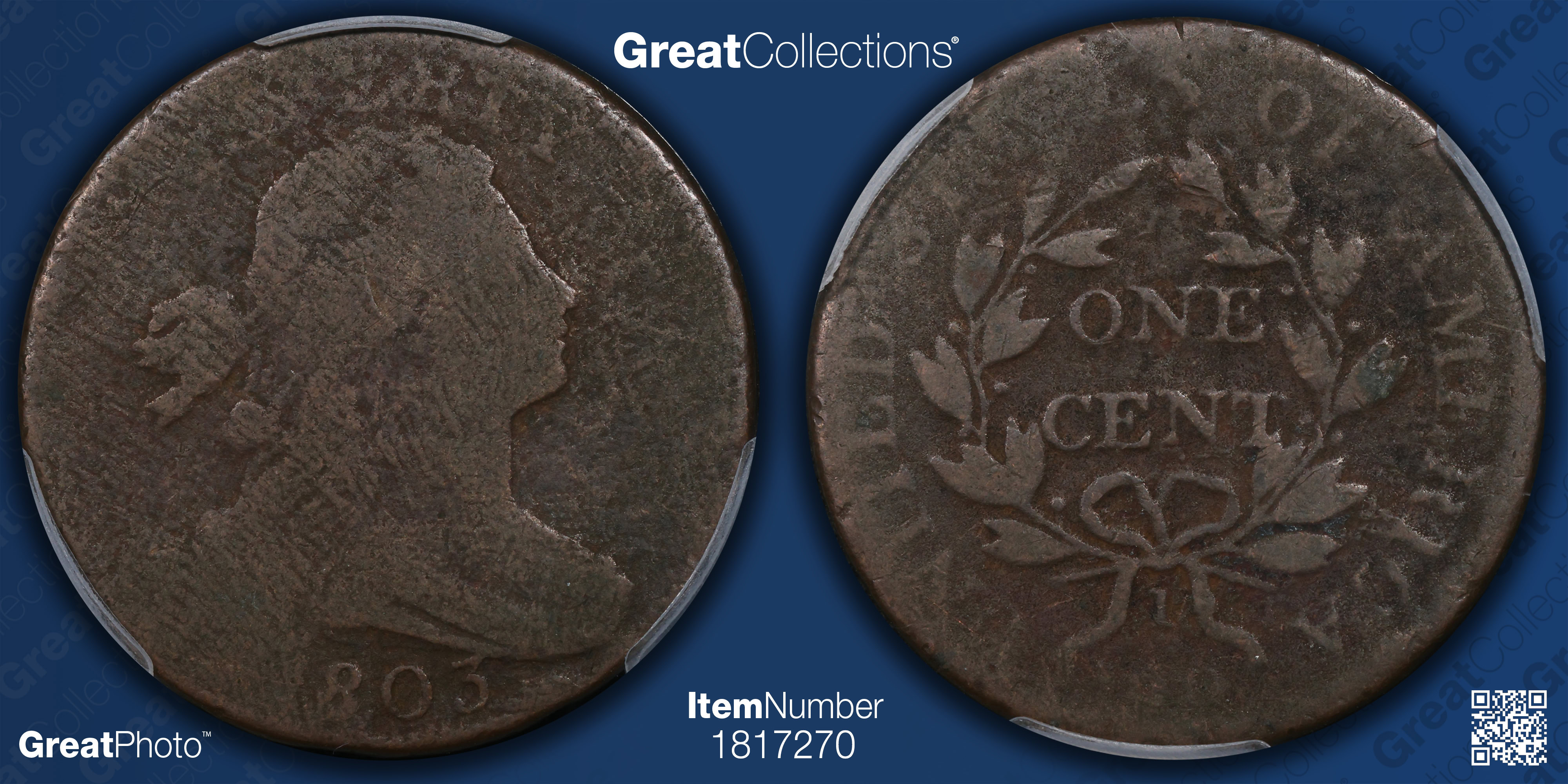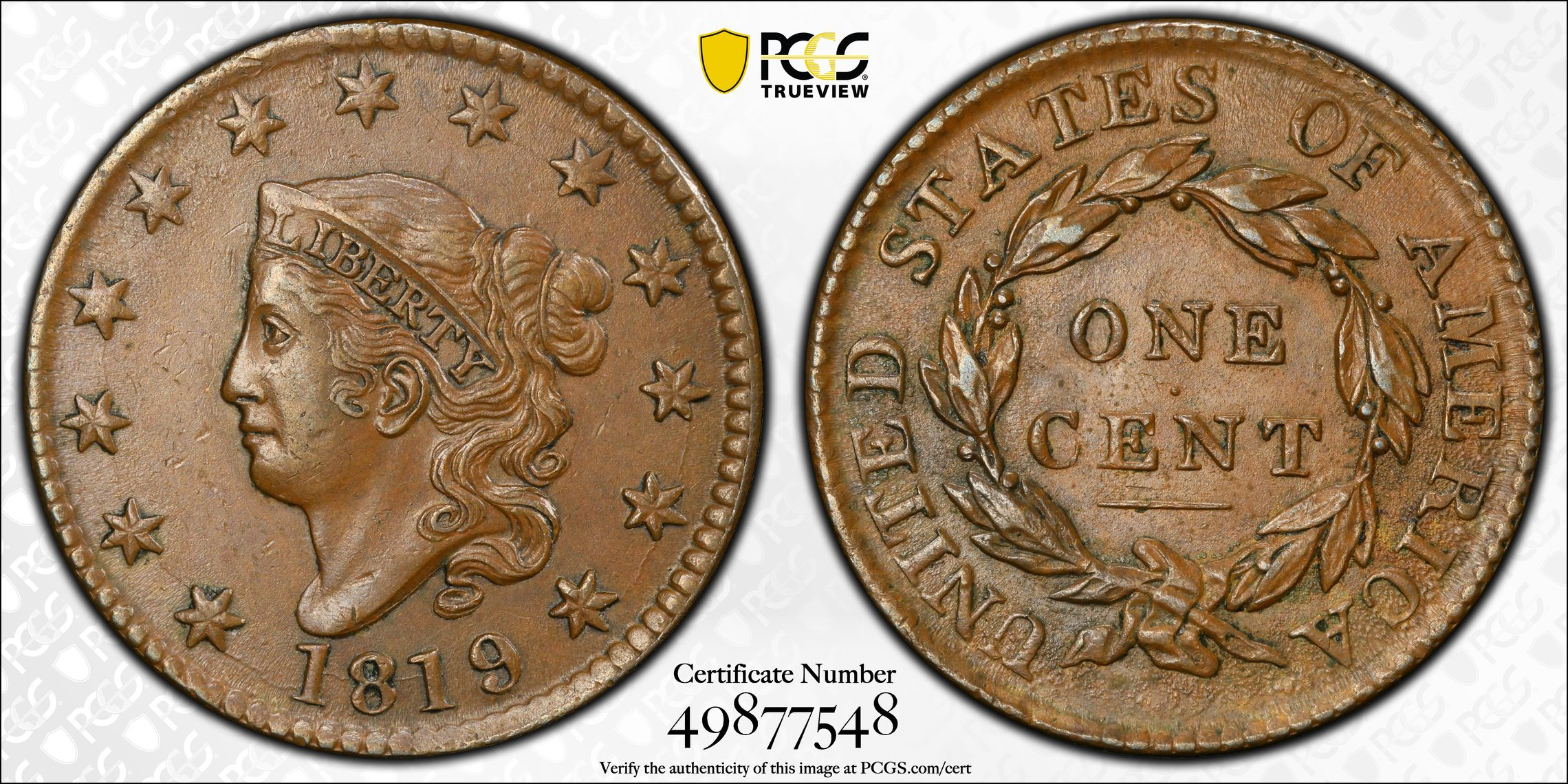Large cent surfaces in low grade, is this Environmental damage or something else?
 Aspie_Rocco
Posts: 3,847 ✭✭✭✭✭
Aspie_Rocco
Posts: 3,847 ✭✭✭✭✭
My numismatic interest has recently shifted to early large copper cents, half cents, and two cents. My knowledge and understanding of these coins is limited so I wanted to get some opinions and insight on surface quality. I occasionally see straight graded coins with what looks like environmental damage to me. Can someone explain the differences between rough wear and environmental damage? When I see what looks like raised metal in a finger print pattern, or a heavily textured surface like stucco or a close up of a matte photo, I assume environmental damage.
Example below from GC
0
Comments
Looks like AG3-G4 Details with Environmental Damage... corrosion. I'm not sure what the wavy lines on the obverse are... looks odd. FWIW, I collect lower grade examples of early copper (anything VF and above is well out of my price range) and I'd probably pass on this one...
Successful BST transactions with: SilverEagles92; Ahrensdad; Smitty; GregHansen; Lablade; Mercury10c; copperflopper; whatsup; KISHU1; scrapman1077, crispy, canadanz, smallchange, robkool, Mission16, ranshdow, ibzman350, Fallguy, Collectorcoins, SurfinxHI, jwitten, Walkerguy21D, dsessom.
If I had to guess, it would be that you are correct in your assessment but that PCGS deemed it market acceptable.
Young Numismatist • My Toned Coins
Life is roadblocks. Don't let nothing stop you, 'cause we ain't stopping. - DJ Khaled
Yes that appears to be ED
It seems they are more forgiving on the lower grade coins, and quicker to assign Genuine Details grades on those coins that have less wear. Only my opinion, but I own and have submitted a fair amount of large cents over the years.
It wouldn’t surprise me if this coin got a pass, but I wouldn’t want it unless I really needed the die variety.
To add: I’m impressed that you are already focusing on and studying surface quality on early copper. This is the key to collecting these. Experienced collectors will generally take the lower grade coin with nicer surfaces over a more detailed coin with problems. Most of us have to compromise on the tougher dates and varieties and accept some issues, but still strive to get coins that “the next guy” may want. Take your time and be patient and selective!
Most early copper coins show some environmental damage. If you rejected every one that did, there would not be much left to collect. I'll start with a couple of high grade pieces and work my way down.
This 1802 large cent is graded PCGS MS-63, Brown, CAC. The official EAC grade, I believe is AU-50. EAC grading is so conservative that it is of little use in the commercial world, in my opinion. EAC pricing is in line with the commercial world. Don't expect to get bargains because of it.
This 1812 large cent is graded AU-58.
Both of these coins are a close as most of us will ever get to "perfect early copper surfaces."
This 1811 large cent is graded VF-25. For a well used piece, this is as good as it gets.
This 1801 Three Errors Cent has been worked upon. It would never get a straight grade, but it's an affordable example of an interesting variety. This coin is raw, but I would price it at the Very Good level. You would be amazed at how little is left of a coin that is graded "Good" these days.
I have more resourses that many collectors, but I can't afford to buy every coin in perfect condition. It requines patience and a lot of money to do that.
As for the coin in the OP, it has environmental damage, but given that it has Fair to AG sharpness, I would not reject the piece out of hand. Everyone has their standards and their limits.
A lot of early copper gets a pass in the grading room, I would bet a significant number of the coins straight graded in any TPG holder have some level of corrosion/ED. As such it is up to you to determine how much is acceptable for your standard.
My Collection of Old Holders
Never a slave to one plastic brand will I ever be.
EAC grading is for the birds. The bottom line is where they price the particular coin.
This is the Draped Bust LC from my 7070... It still has a lot of details left and was sharply struck on a decent planchet, but there's no way this coin would straight grade... IMHO... that's why I got it at a steep discount.
Edited to Add...

By contrast... I purchased this 1819/8 raw because the surfaces and color were much better. The 1803 above has a microporosity evident over most of the coin but at initial glance, with coin in-hand, it's not super apparent (as compared to most early copper... heavily corroded). Large Cents minted between 1793 and 1814 were produced when minting practices were just getting industrialized. Many of the planchets had imperfections from the beginning and were still struck... 18thC QA/QC. The planchets and minting practices took a big step into industrialization with the Middle Dates...
Successful BST transactions with: SilverEagles92; Ahrensdad; Smitty; GregHansen; Lablade; Mercury10c; copperflopper; whatsup; KISHU1; scrapman1077, crispy, canadanz, smallchange, robkool, Mission16, ranshdow, ibzman350, Fallguy, Collectorcoins, SurfinxHI, jwitten, Walkerguy21D, dsessom.